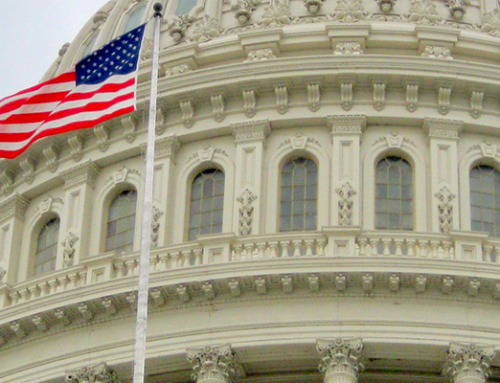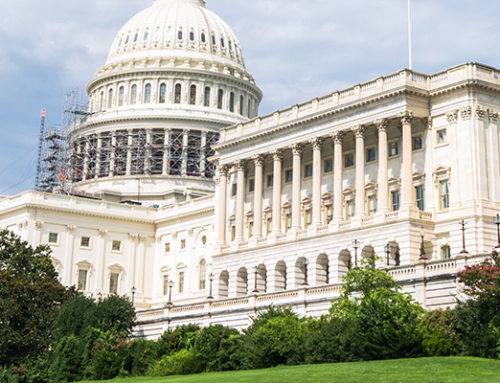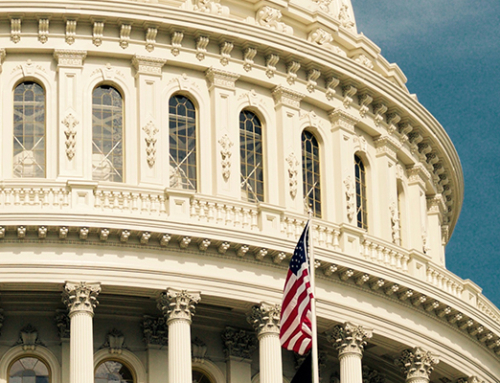On March 7th The Department of Labor (DOL) submitted the Bureau of Labor Statistics (BLS) sponsored information collection request (ICR) revision titled, ‘‘Survey of Occupational Injuries and Illnesses,’’ to the Office of Management and Budget (OMB) for review and approval for use in accordance with the Paperwork Reduction Act (PRA) of 1995.
Public comments on the ICR are invited. The OMB will consider all written comments that agency receives on or before April 6, 2017. See https://www.gpo.gov/fdsys/pkg/FR-2017-03-07/pdf/2017-04367.pdf
This Information Collection Request seeks approval for revisions to the Survey of Occupational Injuries and Illnesses (SOII) information collection. The survey is designed to measure the overall rate of work injuries and illnesses by industry. Survey data are also used to evaluate the effectiveness of Federal and State programs and to prioritize scarce resources. Respondents include employers who maintain related records in accordance with the Occupational Safety and Health Act (OSH Act) and employers who are normally exempt from such recordkeeping. Each year a sample of exempt employers is required to keep records and participate in the survey. This information collection is classified as a revision, because of the addition of a one-time pilot test entitled the Household Survey of Occupational Injuries and Illnesses (HSOII) to this information collection. The BLS will use HSOII Pilot Test data collected to (1) test the feasibility of collecting occupational injuries and illness from workers directly: (2) To estimate the burden of occupational injuries and illnesses in the U.S.; and (3) to compare against occupational injury and illness estimates from the SOII at the national level and for broad industries and occupations. OSH Act section 24(a) authorizes this information collection. See 29 U.S.C. 673.
UWC Comments
This new expansion appears to be the continuation of the discussion between OSHA, BLS, State Health Directors and NIOSH about why there is a difference between injury and illness reports to OSHA, BLS and state workers’ compensation. There are some researchers and policy makers who have suggested that there is underreporting of illness and injuries and they express concerns about the impact on workers’ compensation or perceived levels of health and safety on the job. The assumption that there is underreporting of illness and injuries is a driving policy direction that continues in this increased survey reporting. The pilot would include a survey of workers about injuries and illnesses that would be compared to employer reports.
Recent BLS reports have demonstrated a significant reduction in serious occupational injuries and illnesses, raising questions by some about whether the data is accurate. These concerns are expressed despite broad recognition that health and safety measures and the nature of work has indeed had a positive impact. See the BLS report at http://www.bls.gov/news.release/pdf/osh.pdf
A better approach to address this question would be to work with employers to identify best practices in health and safety measures.
Excerpts
Excerpts from the supporting statement for the expanded survey and worker survey at https://www.reginfo.gov/public/do/PRAViewICR?ref_nbr=201612-1235-001 include:
Household Survey of Occupational Injuries and Illnesses Pilot Test (HSOII)
This revision is being requested for a one time pilot test of Household Survey of Occupational Injuries and Illnesses (HSOII). This package reflects the previous package with information for the HSOII pilot test added under the HSOII heading for each section below.
Existing research points to an underestimate of injuries and illnesses in the SOII attributed to a variety of factors including incentives for employers and employees to underreport these occurrences. The BLS has been investigating underreporting of occupational injuries and illnesses in the SOII for some years. That research has yielded a greater understanding of underreporting in the SOII and some limited improvements that can be made to SOII collection.
ICF International will conduct the HSOII Pilot Test for the Bureau of Labor Statistics (BLS) in support of the Compensation and Working Conditions program.
Uses of the Survey
In 2016 OSHA issued a final rule to ‘Improve Tracking of Workplace Injuries and Illnesses’ (29 CFR Parts 1904 and 1952). This rule will result in OSHA and BLS collecting identical data elements in 2017 for a subset of establishments.
OSHA has indicated it intends to disseminate the data submitted to it. The data submitted to BLS are protected from disclosure by the Confidential Information Protection and Statistical Efficiency Act of 2002 (CIPSEA) and cover a broader scope of the workforce.
Survey estimates are used by a wide range of stakeholders to assess the Nation’s progress in improving the safety and health of America’s work places; to prioritize scarce Federal and state resources; to guide the development of injury and illness prevention strategies; and to support OSHA and state safety and health standards and research. These stakeholders include OSHA, the National Institute for Occupational Safety and Health (NIOSH), Congress, public policy analysts, state public health officials, safety and health advocates, researchers, and the media. Data are essential for evaluating the effectiveness of Federal and state programs for improving work place safety and health. For these reasons, it is necessary to provide estimates separately for participating states.
The SOII program is vital to the safety of America’s workers. Without these necessary estimates, the safety and health community would be less able to focus on enforcement efforts, research prevention practices, and put in place mitigating strategies which lead to fewer occupational fatalities, injuries, and illnesses.
The survey information is used to estimate employer contributions for workers’ compensation by industry. The workers’ compensation contributions are a component of the employer contributions for social insurance and other labor income in the national income and product account.
NIOSH and the Council of State and Territorial Epidemiologists (CSTE) identified twenty-two occupational health indicators intended to improve the surveillance of workplace injuries and illnesses by state health agencies. Each health indicator is comprised of one or more frequency measures. The BLS SOII contributes three frequency measures to these health indicators.
Beginning with survey year 2008, the SOII published national estimates of workplace injuries and illnesses sustained by state and local government workers, including those in such relatively high hazard and high profile occupations as police, firefighters, paramedics, and other public health workers. The BLS collects data from state and local government agencies in all states to support both state and national estimates. The BLS regards the collection of these data as a significant expansion in its overall coverage of the American workplace and it also provides some measure of response to critics who allege an undercount of injuries and illnesses in the survey. The BLS undertook research into the undercount by investigating the issues surrounding a potential undercount. This multiyear research effort provided results in 2012 which were used to guide the selection of further research topics in 2013 to improve the completeness and accuracy of estimates from the SOII. The BLS continues to evaluate the results of the undercount research completed, including testing the feasibility of collection of injury and illness data directly from workers.
A potential solution is to contact workers directly through a household survey. A household survey would be expected to produce estimates that are not filtered by establishment-level reporting involved in the SOII and would sample from the universe of all workers. Such a survey would produce annual calendar year estimates of occupational injuries and illnesses by employment relationship, industry, and occupation. BLS is currently working to determine the collection mode and sample design best used for this type of survey. While this research is ongoing, BLS plans to conduct a large-scale test of feasibility of collecting these data directly from workers.
The HSOII Pilot test will be a large-scale, nationally representative household pilot survey that will allow BLS to test the collection information over one calendar year and also to produce broad industry and occupation estimates comparable to the SOII. These tests continue BLS research into ways to improve completeness of occupational injury and illness measures.
The purpose of the HSOII will be to estimate the burden of occupational injuries and illnesses in the U.S. This pilot data collection effort will determine if a household survey can accurately, and without bias, estimate the true burden of occupational injuries and illnesses. The HSOII will also test the feasibility of collecting these data from workers directly. Occupational injuries and illnesses are relatively rare events, the topic may be perceived as sensitive, and the concepts may not be well understood.
For the more serious injuries and illnesses, those with days away from work, the SOII provides detailed information on the injured/ill worker (age, sex, race, industry, occupation, and length of service), the time in shift, and the circumstances of the injuries and illnesses classified by standardized codes (nature of the injury/illness, part of body affected, primary and secondary sources of the injury/illness, and the event or exposure that produced the injury/illness). Race data categories reflect the Office of Management and Budget (OMB) recommended categories for non-self-reported classification. Optional information on the general job category is used to improve coding for non-descriptive job titles, such as “Customer Service Representative.” A check-off for before/during/after work shift was included to identify the events that occurred before or after the work shift.
In the two decades prior to the OSHA recordkeeping changes in 2002, incidence rates for cases with days away from work decreased significantly while incidence rates for cases with only restricted work activity increased significantly. Since the BLS previously only collected case and demographic data only for cases with days away from work, data were not obtained about a growing class of injury and illness cases.
Beginning with the 2011 survey year, BLS began testing the collection of case and demographic data for injury and illness cases that require only days of job transfer or restriction. The purpose of this on-going pilot study is to evaluate collection of these cases and to learn more about occupational injuries and illnesses that resulted in days of job transfer or work restriction.
BLS is analyzing the results of this test to determine the value of the resulting information and is looking at how best to implement the collection of these data as well as days away from work cases in future survey years. BLS regards the collection of these cases with only job transfer or restriction as significant in its coverage of the American workforce. Industry subsectors were selected based on their days-of-job transfer-or-restriction incidence rate (and to some degree the number of cases) in years before the pilot study. Some industries were selected if the days-of-job transfer-or-restriction incidence rate was greater than or equal to the days-away-from-work incidence rate in the respective industry.
Employers covered under the Act are in one of two categories: (1) Employers who maintain OSHA records on a regular basis; and (2) employers who are normally exempt from OSHA recordkeeping. Each year a sample of exempt employers is required to keep records and participate in the SOII. In December, prior to the survey reference year, sampled employers who are normally exempt from recordkeeping will be notified by the BLS or participating state agencies to record their injuries and illnesses on the OSHA recordkeeping forms, which will be provided by the BLS. The BLS will also provide a courtesy copy of the required OSHA recordkeeping forms to all other survey participants for that reference year.
HSOII
The BLS will use data collected in the HSOII Pilot Test to 1) test the feasibility of collecting occupational injuries and illness from workers directly: 2) to estimate the burden of occupational injuries and illnesses in the U.S.; and 3) to compare against occupational injury and illness estimates from the SOII at the national level and for broad industries and occupations.
As stated above, the results from the HSOII Pilot test will test the feasibility of conducting a survey of occupational injuries and illnesses from workers. If this is determined to be feasible, the results will be used to inform the development of a production-scale survey approach, including survey methodology and sample design.





